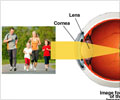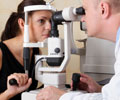Both LASIK and PRK eye procedures are safe and effective, according to results of a 10-year study.
Both LASIK and PRK eye procedures are safe and effective, according to results of a 10-year study presented at the recent American Academy of Ophthalmology’s Joint Meeting.
Researchers who examined patients a decade after undergoing LASIK and PRK treatments say both procedures provide stable, long term improvement for nearsightedness.“Our study provides a clear answer to those who doubt LASIK’s reliability, showing that both LASIK and PRK are effective for correcting myopia with no long term complications,” said lead investigator Jorge L. Alió, MD, PhD, chair of ophthalmology at the Universidad Miguel Hernandez in Alicante, Spain and medical director of VISSUM.
The study, which included 100 eyes with myopia or myopic astigmatism corrected by LASIK and 100 eyes corrected by PRK surgery, measured how well the patients maintained the ability to focus, as well as any changes in visual distortion 10 years after surgery.
Dr. Alió said that according to standard industry safety evaluations, both procedures recorded excellent long-term statistics that showed that patients maintained, on average, 20/25 vision 10 years after surgery.
Study patients with all levels of myopia maintained lasting vision improvements following both types of surgery. Results showed that despite being highly nearsighted prior to surgery, the average patient enjoyed near-normal vision a decade later.
Ophthalmologists measure the degree of a patient’s nearsightedness or farsightedness in units called diopters (D). Diopter measurements closest to zero are considered to be closest to normal vision.
Advertisement
LASIK and PRK Provide Similar Results
Advertisement
What makes one person a candidate for one eye correction surgery over the other is primarily dependent on their corneal thickness or any irregularities on or near the surface of the cornea, Dr. Alio said.
“The basis for any eye correction surgery is to reshape the cornea so that it changes the focal point of the eye,” he said. “Ideally, the focal point is changed so that it focuses perfectly on the retina.”
Dr. Alió said the data showed that PRK was somewhat more effective than LASIK for those with low levels of myopia, while LASIK performed slightly better for those with more severe nearsightedness.
He attributed these differences to the state of PRK technology ten years ago. According to Dr. Alió, recent improvements in PRK have made the two surgeries more comparably effective.
“With proper patient selection using today’s technologies, no one should harbor any doubts about the safety and lasting results of LASIK and PRK surgeries,” he said.
Source-Newswise
SRM











